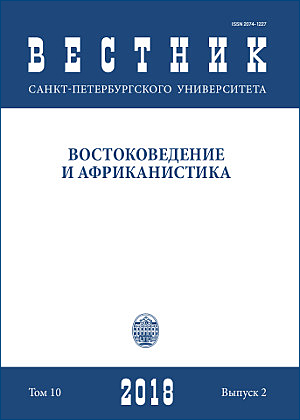Romanization systems, text segmentation and morphemic analysis in the study of Old Japanese texts
DOI:
https://doi.org/10.21638/11701/spbu13.2018.203Abstract
This particular study is an inconspicuous part of a large project – new academic translations of the songs of “Kojiki” and “Nihon Shoki” into Russian published recently at Amazon publ. They contain original texts, romanization, glossing, translations into Russian and some commentaries. Such a book falls within a structural approach in diachronic linguistics. Structural linguistic analyses involve morphemes identification and glossing — we pay special attention to phonetics when analyzing Old Japanese texts. The morphemic analysis is rather complicated without a detailed phonetic study of the language period, which serves as a basis for many morphemic phenomena. When using structural and morphemic analyses, we admit tier structure of the language, which presupposes morphophonemic level. In addition to their classical definition, morphemes here function as phonemes combination, what in many cases helps to avoid misreadings. In this limited space I will try to give answers to the following questions: why do we use one or another romanization system while transliterating Old Japanese text; why it is vital for academic translations to use transliteration, rather than syllabic script; what transliteration systems do we have today and what are the particular benefits of each of them, offering readers explanations of the main differences between layered structure of Old Japanese and classical Japanese grammar (see, for example, translated into Russian in 2017 textbook in Classical Japanese by Haruo Shirane).
Keywords:
Old Japanese, romanization, glossing, morphemic analysis
Downloads
References
References
Downloads
Published
How to Cite
Issue
Section
License
Articles of "Vestnik of Saint Petersburg University. Asian and African Studies" are open access distributed under the terms of the License Agreement with Saint Petersburg State University, which permits to the authors unrestricted distribution and self-archiving free of charge.





